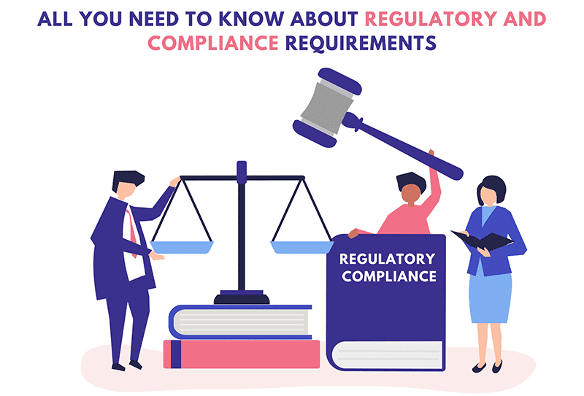Hello Everyone,
As you know, ensuring the safety and managing the risks associated with medical devices & IVDs are paramount for safeguarding the well-being of patients and users. Within the European Union (EU), the Medical Device Regulation (MDR), known as Regulation (EU) 2017/745 & the In Vitro Diagnostic Medical Devices Regulation (IVDR), known as Regulation (EU) 2017/746, provides an encompassing framework for evaluating, approving, and surveilling medical devices & IVD devices. Playing a pivotal role in this regulatory landscape, the EN ISO 14971:2019/A11:2021 standard offers guidelines for effective risk management. In this blog, we delve into the interplay between EN ISO 14971:2019/A11:2021 and the General Safety and Performance Requirements of Regulation (EU) 2017/745 & Regulation (EU) 2017/746, while taking into account the introduction of Annex ZA and Annex ZB.
EN ISO 14971:2019/A11:2021 – The Standard in Risk Management:
Developed by the esteemed International Organization for Standardization (ISO), EN ISO 14971:2019/A11:2021 provides a structured approach to managing risks associated with medical devices & IVD devices throughout their lifecycle. It serves as a compass, outlining the principles and processes required for identifying, assessing, controlling, and monitoring risks in a robust manner. Compliance with this standard demonstrates unwavering commitment to patient safety, as it empowers manufacturers to systematically address potential hazards and minimize risks throughout their medical devices & IVD devices’ lifespan.
Suggested Read:
Understanding IVD Legacy Medical Devices IVDR Compliance
When to Consider the General Safety and Performance Requirements (GSPR)?
The General Safety and Performance Requirements (GSPR) must be considered during the design and development phase of a medical device and throughout its regulatory submission process, especially for CE marking under the EU MDR 2017/745. GSPR ensures that the device meets essential safety, performance, and risk management criteria before being placed on the market. Manufacturers must demonstrate compliance through a GSPR checklist, supported by technical documentation, test reports, and clinical evidence. GSPR is also crucial when making design changes, during audits by Notified Bodies, and for post-market surveillance activities to ensure ongoing compliance and patient safety.
General Safety and Performance Requirements of Regulation (EU) 2017/745:
The MDR, the illustrious Regulation (EU) 2017/745, outlines the general safety and performance requirements that medical devices must fulfil to gain legal access to the EU market. These requirements span various domains, encompassing design and manufacturing, risk management, clinical evaluation, labelling, post-market surveillance, and usability. Annex I of the regulation acts as an invaluable reference, guiding manufacturers to ensure their devices conform to the requisite safety and performance standards.
General Safety and Performance Requirements of Regulation (EU) 2017/746:
The IVDR, designated as Regulation (EU) 2017/746, establishes a comprehensive regulatory framework in the European Union (EU) for in vitro diagnostic medical devices. It delineates the prerequisites for the safety and performance of these devices to gain legal access to the EU market. The regulation encompasses a broad range of areas including design and manufacturing, risk management, evaluation of clinical performance, labeling, post-market surveillance, and market surveillance. Annex I of the IVDR serves as an invaluable point of reference, guiding manufacturers to ensure adherence to the general safety and performance standards.
How to Fulfill General Safety and Performance Requirements
To fulfill the General Safety and Performance Requirements (GSPR) under EU MDR 2017/745, manufacturers must ensure that their medical device is designed, manufactured, and tested to meet all applicable safety and performance criteria. This involves conducting a risk management process (per ISO 14971), preparing a detailed GSPR checklist linking each requirement to supporting evidence such as test reports, design documents, and clinical evaluations. Compliance with harmonized standards (like ISO 10993 for biocompatibility) helps demonstrate conformity. Documentation should be included in the technical file, and regularly updated. GSPR fulfillment is essential for CE marking, audits, and ongoing regulatory compliance.
Annex ZA & Annex ZB – Aligning Risk Management with EU MDR Requirements:
Annex ZA & ZB serves as a checklist, enabling manufacturers to demonstrate compliance with the EU MDR’s & EU IVDR’s general safety & performance requirements by aligning them with the risk management process outlined in EN ISO 14971:2019/A11:2021. It covers specific aspects such as:
- Design and manufacturing requirements: Manufacturers must ensure that their risk management activities address the potential risks associated with device design and manufacturing processes, providing evidence of compliance.
- Clinical evaluation and post-market surveillance: Risk management should encompass the ongoing evaluation of clinical data and post-market surveillance to identify and mitigate risks throughout the device’s lifecycle.
- Labelling and instructions for use: Risk management should consider the adequacy and clarity of labelling and instructions for use to ensure proper understanding and safe use of the device.
- Usability: Manufacturers should assess and manage risks related to device usability, considering factors such as human factors engineering and user training.
Harmonised Standards in Medical Device Risk Management
Harmonised standards play a critical role in medical device risk management by providing recognized frameworks to ensure safety and effectiveness. The most important is ISO 14971, which outlines a structured process for identifying, evaluating, controlling, and monitoring risks throughout the device lifecycle. Other key standards include ISO 13485 for quality management systems, IEC 62366 for usability engineering, and ISO 10993 for biocompatibility. Compliance with these harmonised standards helps manufacturers demonstrate conformity with the General Safety and Performance Requirements (GSPR) under EU MDR. They also simplify regulatory approval processes by providing accepted methodologies for risk analysis and mitigation.
Common Specifications for Medical Devices and IVDs
Common Specifications (CS) for medical devices and in vitro diagnostic devices (IVDs) are legally binding technical and performance requirements established by the European Commission under the EU MDR (2017/745) and IVDR (2017/746). They serve as an alternative or complement to harmonised standards, particularly when such standards are unavailable or insufficient. CS ensure consistent safety, performance, and quality across specific device categories, such as reusable surgical instruments or high-risk IVDs. Manufacturers must demonstrate compliance with applicable CS during conformity assessment. If deviating from CS, they must provide a robust justification supported by equivalent or superior evidence of safety and performance.
Conformity Assessment for EN ISO 14971:2019/A11:2021:
Annex ZA & ZB provides guidance on performing a conformity assessment against the requirements of EN ISO 14971:2019/A11:2021 within the EU MDR & EU IVDR framework. It specifies the elements and procedures necessary to demonstrate compliance with the risk management standard. Manufacturers referring to Annex ZA & ZB will find guidance on:
- Risk management process documentation: Manufacturers must document their risk management
- Risk management file: Manufacturers should compile a comprehensive risk management file that includes all relevant information and documentation related to risk management activities.
- Evaluation of residual risks and overall risk acceptability: The assessment should include the evaluation of residual risks and the determination of their acceptability based on a careful risk-benefit analysis.
- Integration with other MDR requirements: Annex ZB emphasizes the integration of risk management activities with other MDR requirements, ensuring a cohesive approach to compliance.
The Art of Compliance:
Compliance with the interplay between EN ISO 14971:2019/A11:2021, Annex ZA, Annex ZB, and the General Safety and Performance Requirements of the EU MDR & EU IVDR is of paramount importance for manufacturers. By meticulously assimilating risk management principles and harmonizing them with the specific requirements outlined in the EU MDR & EU IVDR, manufacturers can enhance the safety and performance of their devices. Compliance not only ensures regulatory adherence but also inspires unwavering confidence among regulatory authorities, healthcare professionals, and patients alike.
Furthermore, adherence to EN ISO 14971:2019/A11:2021 and its associated annexures blesses manufacturers with a robust risk management framework that supports effective decision-making throughout a device’s lifecycle. It empowers manufacturers to identify potential risks, implement prudent risk control measures, diligently monitor device performance, and facilitate appropriate post-market surveillance and reporting.
Sample Table to be added in the Risk Management Plan & Report:
| GSPR Clause No. | GSPR Description | Applicable/Not Applicable | Compliance with reference to Risk Management |
| 3, first paragraph | Manufacturers shall establish, implement, document and maintain a risk management system. | Applicable | We have complied to the requirements of Clause 3, first paragraph of GSPR in the Section# of this Risk Management Plan/Report. |
| 3, second paragraph | Risk management shall be understood as a continuous iterative process throughout the entire lifecycle of a device, requiring regular systematic updating. In carrying out risk management manufacturers shall: | Applicable | We have complied to the requirements of Clause 3, second paragraph of GSPR in the Section# of this Risk Management Plan/Report. |
| 3, item (a) | Establish and document a risk management plan for each device | Applicable | We have complied to the requirements of Clause 3, item (a) of GSPR in the Section# of this Risk Management Plan/Report. |
| 3, item (b) | Identify and analyse the known and foreseeable hazards associated with each device | Applicable | We have complied to the requirements of Clause 3, item (b) of GSPR in the Section# of this Risk Management Plan/Report. |
| 3, item (c) | Estimate and evaluate the risks associated with, and occurring during, the intended use and during reasonably foreseeable misuse; | Applicable | We have complied to the requirements of Clause 3, item (c) of GSPR in the Section# of this Risk Management Plan/Report. |
| 3, item (d) | Eliminate or control the risks referred to in point (c) in accordance with the requirements of Section 4; | Applicable | We have complied to the requirements of Clause 3, item (d) of GSPR in the Section# of this Risk Management Plan/Report. |
| 3, item (e) | Evaluate the impact of information from the production phase and, in particular, from the post-market surveillance system, on hazards and the frequency of occurrence thereof, on estimates of their associated risks, as well as on the overall risk, benefit-risk ratio and risk acceptability; | Applicable | We have complied to the requirements of Clause 3, item (e) of GSPR in the Section# of this Risk Management Plan/Report. |
| 3, item (f) | Based on the evaluation of the impact of the information referred to in point (e), if necessary amend control measures in line with the requirements of Section 4. | Applicable | We have complied to the requirements of Clause 3, item (f) of GSPR in the Section# of this Risk Management Plan/Report. |
| 4, first paragraph | Risk control measures adopted by manufacturers for the design and manufacture of the devices shall conform to safety principles, taking account of the generally acknowledged state of the art. To reduce risks, Manufacturers shall manage risks so that the residual risk associated with each hazard as well as the overall residual risk is judged acceptable. In selecting the most appropriate solutions, manufacturers shall, in the following order of priority: | Applicable | We have complied to the requirements of Clause 4, first paragraph of GSPR in the Section# of this Risk Management Plan/Report. |
| 4, item (a) | Eliminate or reduce risks as far as possible through safe design and manufacture; | Applicable | We have complied to the requirements of Clause 4, item (a) of GSPR in the Section# of this Risk Management Plan/Report. |
| 4, item (b) | Where appropriate, take adequate protection measures, including alarms if necessary, in relation to risks that cannot be eliminated; | Applicable | We have complied to the requirements of Clause 4, item (b) of GSPR in the Section# of this Risk Management Plan/Report. |
| 4, item (c) | provide information for safety (warnings/precautions/contra-indications) and, where appropriate, training to users. | Applicable | We have complied to the requirements of Clause 4, item (c) of GSPR in the Section# of this Risk Management Plan/Report. |
| 4, last paragraph | Manufacturers shall inform users of any residual risks. | Applicable | We have complied to the requirements of Clause 4, last paragraph of GSPR in the Section# of this Risk Management Plan/Report. |
| 5, item (a) | In eliminating or reducing risks related to use error, the manufacturer shall: (a) reduce as far as possible the risks related to the ergonomic features of the device and the environment in which the device is intended to be used (design for patient safety) | Applicable | We have complied to the requirements of Clause 5, item (a) of GSPR in the Section# of this Risk Management Plan/Report. |
| 5, item (b) | Give consideration to the technical knowledge, experience, education, training and use environment, where applicable, and the medical and physical conditions of intended users (design for lay, professional, disabled or other users). | Applicable | We have complied to the requirements of Clause 5, item (b) of GSPR in the Section# of this Risk Management Plan/Report. |
| 8 | All known and foreseeable risks, and any undesirable side-effects, shall be minimised and be acceptable when weighed against the evaluated benefits to the patient and/or user arising from the achieved performance of the device during normal conditions of use. | Applicable | We have complied to the requirements of Clause 8 of GSPR in the Section# of this Risk Management Plan/Report. |
| 9 (ONLY FOR MEDICAL DEVICES – as per Annex I of EU MDR) | For the devices referred to in Annex XVI, the general safety requirements set out in Sections 1 and 8 shall be understood to mean that the device, when used under the conditions and for the purposes intended, does not present a risk at all or presents a risk that is no more than the maximum acceptable risk related to the product’s use which is consistent with a high level of protection for the safety and health of persons. | Not Applicable OR Applicable | Our device has an intended medical purpose. Hence, this clause is not applicable.
OR
We have complied to the requirements of Clause 9 of GSPR in the Section# of this Risk Management Plan/Report. |
Conclusion
In conclusion, the interrelationship between EN ISO 14971:2019/A11:2021, Annex ZA, Annex ZB, and the General Safety and Performance Requirements of Regulation (EU) 2017/745 & 2017/746 holds great significance for device manufacturers in the EU. By meticulously adhering to EN ISO 14971:2019/A11:2021 and harmonizing their risk management processes with the discerning requirements outlined in the EU MDR & EU IVDR, manufacturers can deftly manage risks, ensuring patient safety while satisfying the essential requirements set forth by the regulation. Embracing these guidelines heralds an era of elevated quality, unwavering safety, and optimal performance of devices, nurturing trust and confidence in the European market. Collaborating with regulatory experts and notified bodies can further aid manufacturers in traversing these requirements adeptly and achieving compliance with élan.








